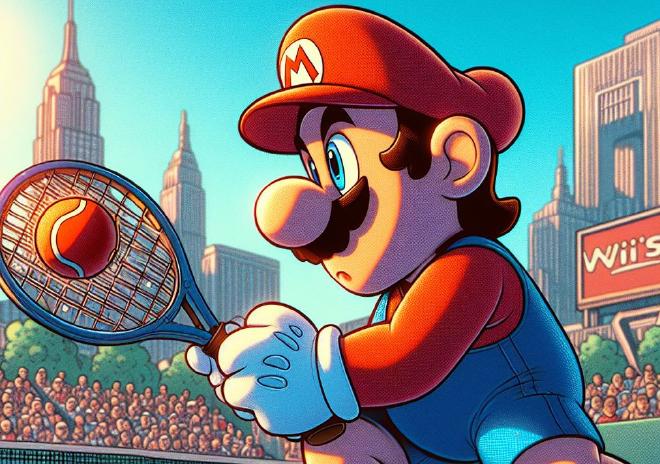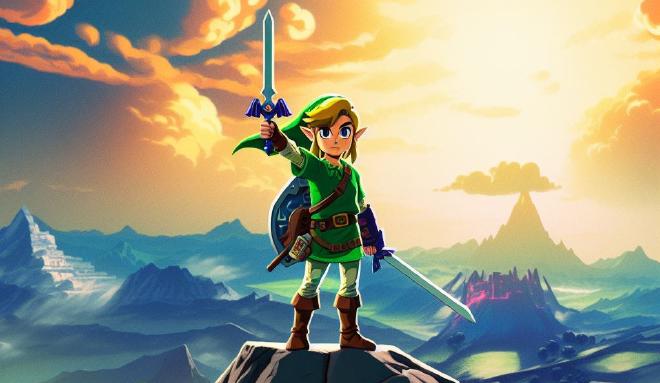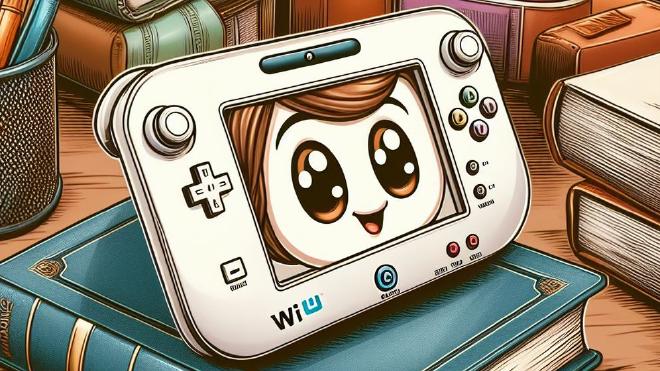In 2006, when big movies and iPods were stealing the spotlight, the Nintendo Wii quietly started a revolution in gaming. Forget bulky controllers; this unassuming console brought a waggle-happy remote and game-changing motion controls. It wasn’t just a console; it became a cultural icon, making gaming fun and accessible for everyone.
Motion Magic: Making Gaming a Physical Joy #
The Wii’s superpower? Simplicity. It tossed out complicated controllers and embraced natural, intuitive movements. Bowling became real, tennis turned into a dance, and even grandmas swung virtual swords. This motion magic wasn’t just a trick; it opened the door for everyone, no matter their age or gaming experience.
Beyond just being intuitive, the Wii’s motion controls introduced a new level of engagement. Suddenly, you weren’t just pushing buttons; you were part of the action. Your body became the controller, and gaming turned into a physical joy, blurring the line between the virtual and the real.

Wii Sports: More Than Just Games #
The Wii didn’t just introduce motion controls; it bundled them into Wii Sports. This built-in mix of bowling, tennis, golf, and boxing was more than a game; it was a social spark. Families and friends who never touched a controller found themselves laughing and competing over pixelated pins. The Wii wasn’t just a console; it was an instant party starter.
Wii Sports wasn’t just a game; it was a phenomenon. It transformed living rooms into arenas of friendly competition and brought people together in ways no one expected. The joy of knocking down virtual pins or acing a virtual tennis match wasn’t just about the game; it was about the shared experience, the laughter, and the unforgettable moments.
Beyond the Living Room: Wii on the Move #
Say goodbye to dull treadmills. The Wii Fit strolled into homes not with heavy weights and boring machines but with a cheerful smile and a balance board. It wasn’t your usual workout; it was like having a fun dance in your living room.
Exercise wasn’t a boring job anymore; it turned into a game of virtual skiing and yoga poses, flowing like a beautiful dance. The balance board, like a wise friend in sneakers, led you through routines that felt more like beating a video game boss than a tough workout. It was a new way of thinking about fitness, a fun rebellion against the hard work of regular exercises.
The Wii Fit reached deeper, showing that games weren’t just for fingers and screens. They could be good for your spirit too. It gave you a sense of achievement, a fun way to say no to the idea that getting fit had to be a lonely, not-so-fun task. With each virtual mountain conquered and every pixelated yoga pose nailed, you weren’t just making your body stronger; you were proving that you could enjoy the journey.

A Treasure Trove of Games: Something for Everyone #
The Wii’s game library isn’t all sports and fitness. It held a universe of delights for every gamer. Casual hits like Wii Play and Wii Party brought families together, while hardcore gems like Metroid Prime 3 and The Legend of Zelda: Twilight Princess proved that motion controls and deep experiences could coexist.
The diversity of the Wii’s game library was its strength. Whether you were a seasoned gamer or someone picking up a controller for the first time, there was something for everyone. The range of genres, from action-adventure to party games, showcased the versatility of motion controls. It wasn’t just about the quantity of games; it was about the quality and the variety, ensuring that every player found their perfect match.

The Wii U #
In 2012, Nintendo took a bold leap with the Wii U, a console that aimed to redefine the gaming experience. Unlike its predecessor, the Wii U introduced the GamePad, a unique controller with a built-in touchscreen. This addition brought a new layer of interactivity, allowing players to switch between the TV and the GamePad for different perspectives or use the touchscreen for innovative gameplay mechanics. While the Wii U faced challenges in conveying its identity and struggled with third-party support, it marked a courageous attempt to blend traditional and touchscreen gaming. With titles like Super Mario 3D World and Splatoon showcasing the console’s potential, the Wii U, despite its commercial struggles, left an indelible mark on Nintendo’s journey of experimentation and innovation.
A Legacy of Innovation: Shaping the Future #
The Wii’s impact goes beyond its time. It paved the way for today’s motion-controlled experiences, proving that innovation isn’t just about power or graphics. Fifteen years later, we still feel its influence in Joy-Cons, VR worlds, and the evolving world of interactive entertainment.
The legacy of the Wii isn’t just in the games it brought to living rooms; it’s in the way it changed our expectations of gaming. It showed us that gaming could be inclusive, that it could be a social activity, and that it could be a part of our daily lives. The Wii’s innovation wasn’t just a one-time thing; it set the stage for a future where technology and fun go hand in hand.
So, when you spot that iconic white remote, remember it’s not just plastic and buttons. It’s a revolution in your hand, a portal to a world of motion-fueled fun, and a reminder that everyone deserves to play.
